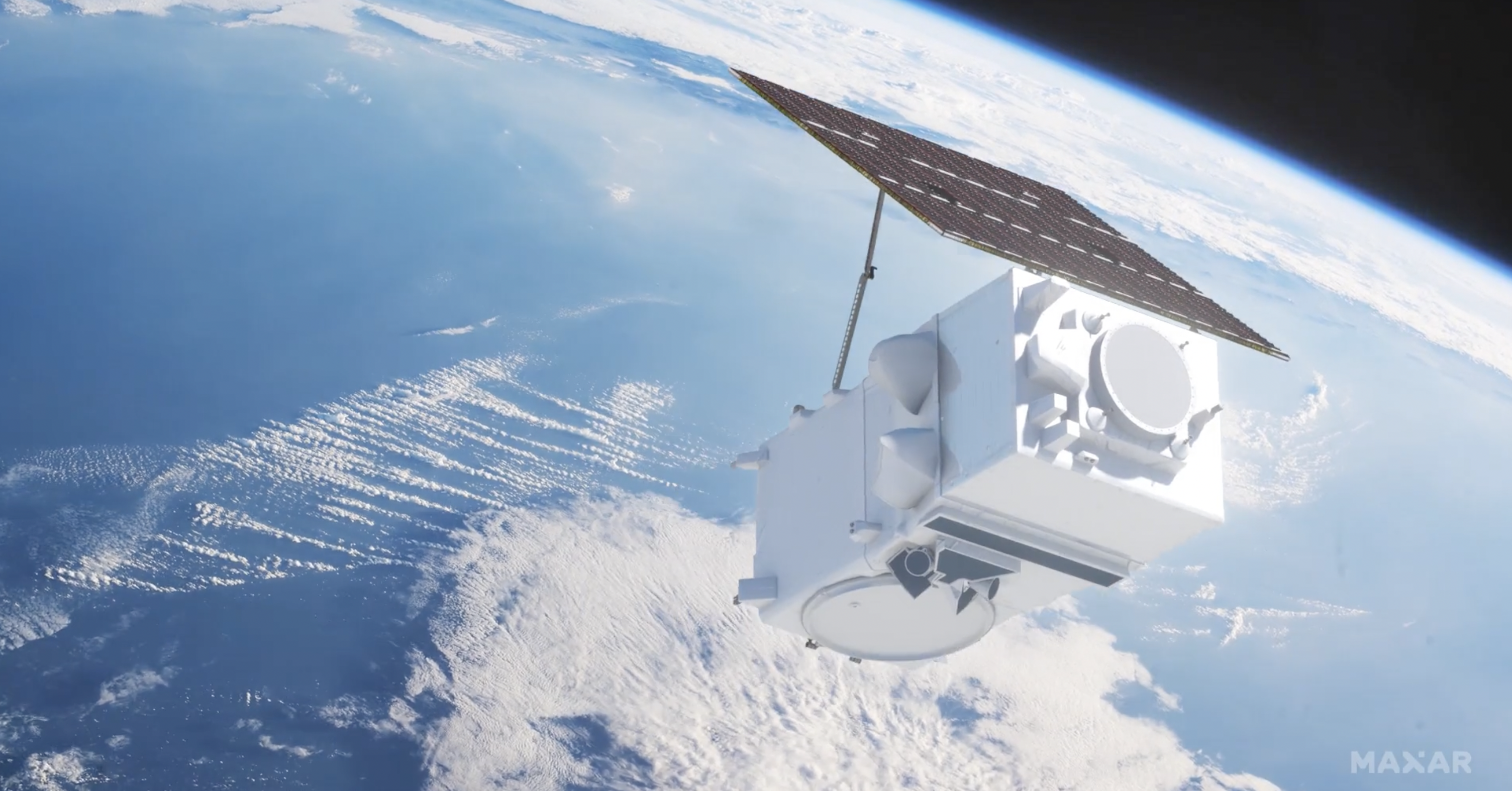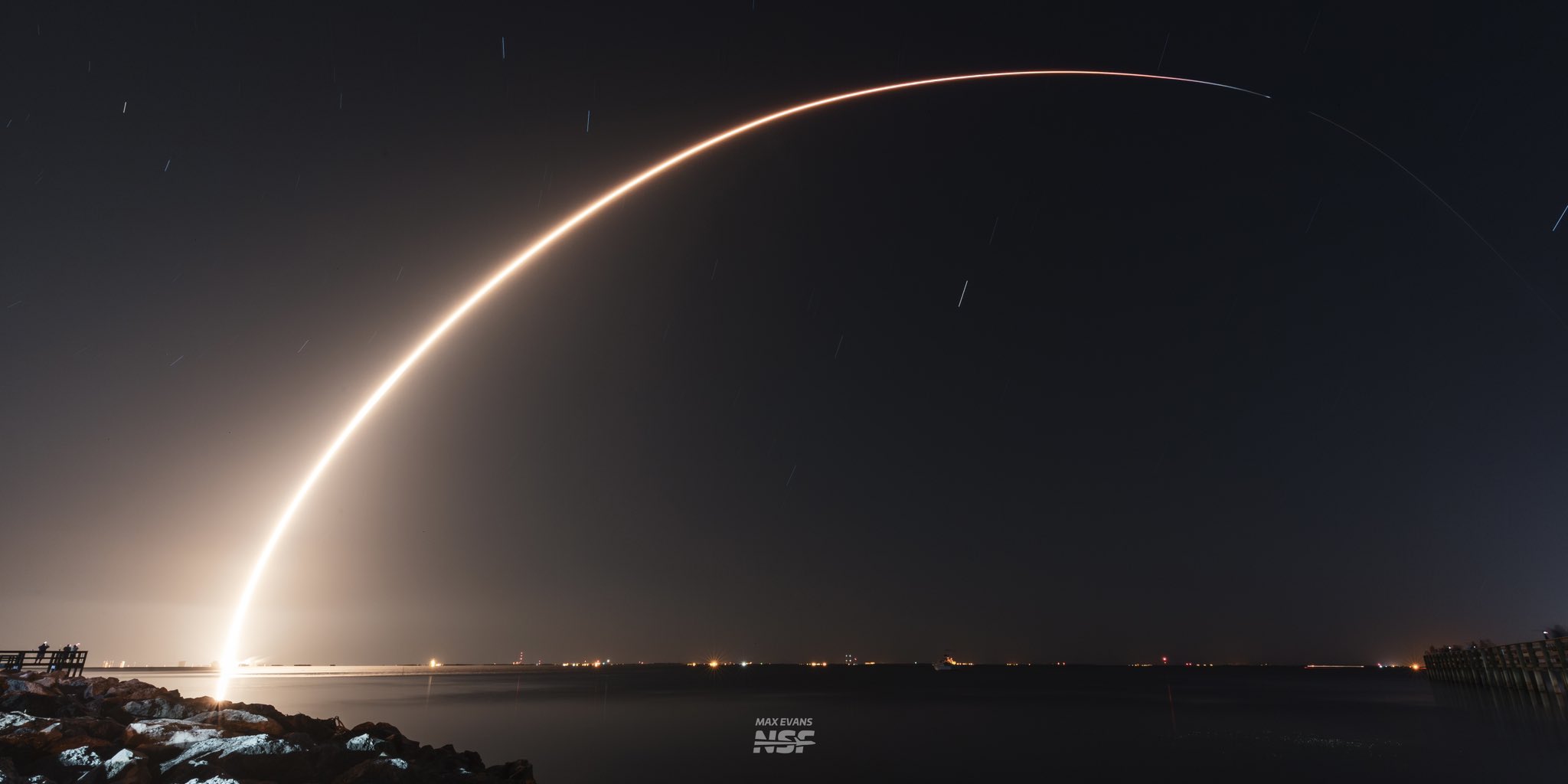With seven Falcon 9 launches flown this month already, SpaceX’s rapid pace continues with another three flights planned for this coming week. There are two planned launches on Wednesday, April 17, from both the east and west coasts, and another on Thursday, April 18. Additionally, a Chinese Chang Zheng 2D launched on Monday.
Not content with breaking new cadence records in the first quarter of the year with an impressive 31 launches, SpaceX continued to reach new milestones last week. The company celebrated the first 20th launch and landing of a booster with B1062 during the Starlink 6-49 mission — a booster that has flown eight astronauts to space. The company also completed three orbital launches from Vandenberg in just 11 days, including the fastest turnaround time ever for Space Launch Complex (SLC) 4E at four and a half days between the USSF-62 and Starlink Group 8-1 missions.
Wednesday’s Starlink Group 6-51 mission will be the company’s 40th Falcon 9 mission of the year to date. To put this, and its increasing cadence, in context it took SpaceX until late June last year to reach this point, and early September to reach this stage in 2022. A year ago this week, the company had launched 23 missions so far.
With everything going to schedule and having already notched up seven missions in April, the company will finish this week with ten Falcon 9 flights completed. It was only a few months ago that the team celebrated this feat as a new monthly milestone at the end of January. The company is making good progress now towards the still-ambitious goal of 148 flights this year and is also close to reaching 300 successful recoveries, which could be achieved before the end of this month.
The United States and China account for 82 percent of launches so far this year, China being the second busiest nation for launches, with 15 total at the start of this week. The launch of a Chang Zheng 2D in the early hours of Monday morning increased this count further, lifting an Earth observation satellite to orbit. As the week begins, there have been a total of 72 orbital launches worldwide so far this year, with SpaceX accounting for around 52 percent of all orbital launches this year.
A Chang Zheng 2D (CZ-2D) launched from Site 9401 (SLS-2) at the Jiuquan Satellite Launch Center in China on Monday, April 15, at 04:12 UTC at the start of a brief 25-minute launch window.
This was the third flight of the two-stage CZ-2D vehicle this year, all of which have taken place in a period lasting just over three weeks. The rocket has previously lifted both the secretive Yaogan 42-01 remote sensing satellite and the Yunhai-2 Group 02 meteorological satellites into low-Earth orbit for the Chinese military in recent weeks.
This time, the payload was the SuperView Neo 3-01 Earth observation satellite, heading into a Sun-synchronous orbit. Built for China Siwei Survey and Mapping Technology Co. Ltd. by the China Aerospace Science and Technology Corporation, the satellite boasts 0.5-meter resolution over nine image wavelength bands and a 130-kilometer-wide imaging swath. The SuperView Neo constellation is planned to extend to 28 satellites, the first four of which were launched in pairs back in April and July 2022.
The CZ-2D is a reliable workhorse, produced by the state-owned Shanghai Academy of Spaceflight Technology. It has been actively carrying satellites into Sun-synchronous and other low-Earth orbits for over 30 years. With 87 previous launches under its belt, the vehicle has only suffered one partial failure, occurring over seven years and 55 flights ago when the payloads were placed into a lower-than-intended orbit.

A Falcon 9 is scheduled to launch from SLC-4E at Vandenberg Space Force Base on Wednesday, April 17, at 11:30 AM PDT (18:30 UTC), taking two satellites massing a total of 1,500 kilograms into a Sun-synchronous orbit. The booster, which is yet to be confirmed, will return to land on the pad at Landing Zone 4, which is located around 400 meters away from the launch mount.
The WorldView Legion satellite constellation is Maxar Technologies’ next-generation constellation of Earth observation satellites, designed and built in-house at the company’s facilities in Palo Alto and San Jose, California. DigitalGlobe first announced its selection of SpaceX as the launch provider back in 2018 when the satellites were initially anticipated to launch in two blocks of six. Hardware-based delays, as well as the complexity of the technology, have caused a number of setbacks. The planned constellation will now consist of six satellites in total, to be launched in pairs and will orbit in polar and mid-inclination orbits.
The satellites are the first to utilize a new Maxar 500 series bus platform with better stability, agility, and pointing accuracy. They will occupy an approximately 500-kilometer altitude orbit when fully deployed, providing 30-centimeter high-resolution imagery and eight-band multispectral imagery across 15 revisits per day over the most active regions of the world. The satellites will triple the company’s coverage in 30-centimeter class resolution, capturing five million square kilometers of imagery each day. The satellites are designed with a 10-year lifespan.
Applications will include supporting national security missions for monitoring and surveillance of ground-based potential threats or verifying enforced sanctions and treaties. The satellites also provide a variety of maritime monitoring functions such as the surveillance of natural disasters, pollution, and oil spills through to the detection of illegal fishing, piracy, drug smuggling, or human trafficking. Utilizing artificial intelligence algorithms, the WorldView Legion satellites can support the abilities to detect, identify, and respond quickly to suspicious activities. Maxar worked with its instrument partner Raytheon to develop a smaller telescope that requires less power.
Falcon 9 Block 5 | Starlink Group 6-51
The first Starlink mission of the week is scheduled to launch from Launch Complex 39A at the Kennedy Space Center in Florida on Wednesday, April 17, at 5:24 PM EDT (21:24 UTC). As with other missions into this Group 6 shell, the Falcon 9 will carry another batch of 23 Starlink v2 Mini satellites into an initial 284 by 292-kilometer orbit, inclined 43 degrees.
The booster, which has not been identified yet, is likely to land on the autonomous droneship Just Read the Instructions, located downrange in the Atlantic, at around eight and a half minutes after launch.
The second Starlink mission of the week is scheduled to launch from neighboring SLC-40 at the Cape Canaveral Space Force Station and will carry another batch of Starlink v2 Mini satellites into the same Group 6 shell of the constellation. Liftoff is expected at 6:40 AM EDT (22:40 UTC) at the start of a four-and-a-half-hour launch window on Thursday, April 18.
The booster, which has not been identified yet, is expected to land on an autonomous droneship further downrange. SLC-40 was the pad from which the Group 6-49 and Group 6-48 missions launched during the previous week, the latter of which was unusually delayed twice into its launch window for undeclared reasons that did not appear to be weather-related.
This will be the 76th orbital launch attempt of the year and the 325th orbital Falcon 9 mission to date. At the start of this week, 6,189 Starlink satellites had been launched, of which 402 had re-entered, and 5,196 were in operational orbits.



 crypto.news
crypto.news DogeHome
DogeHome CFN
CFN Times Tabloid
Times Tabloid Thecoinrepublic.com
Thecoinrepublic.com Crypto News Land
Crypto News Land CoinPedia News
CoinPedia News






















